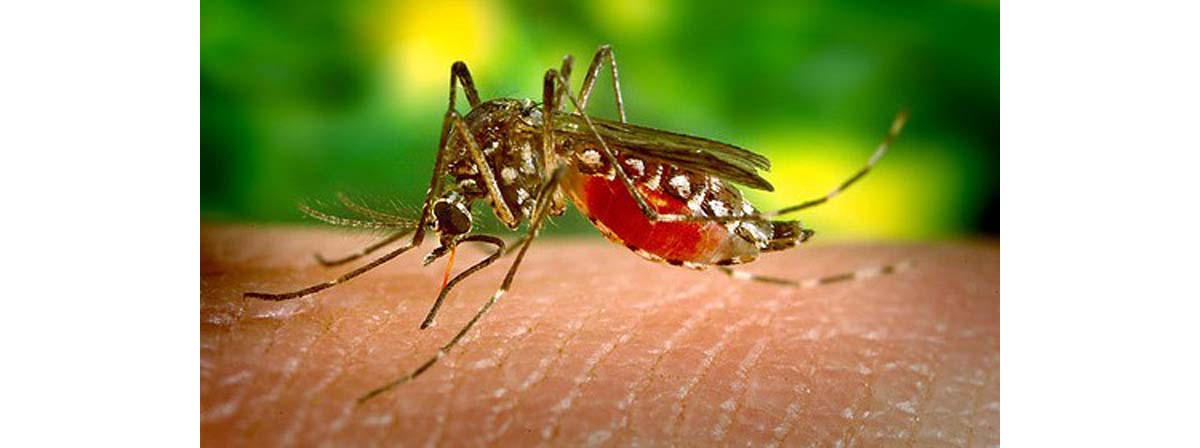Table of Contents
As no vaccine and drug have been developed to treat the disease so far, only symptomatic treatment of dengue is available at present time. The adequate clinical examination is important for faster diagnosis and treatment. In the acute cases, supportive treatment such as intravenous re-hydration needs to be done. Fluid replacement and blood transfusion have proven to save lives of those who suffer from dengue complications.

Factors behind the disease persistence
Climate and population growth seem to be behind the persistence and spread of disease. Hotter and wetter weather hastens the life cycle of disease-carrying mosquitoes and increases the tendency for stagnant waters to accumulate. When the yearly low temperature rises above the average, the illness occurs earlier and affects a larger percentage of the population. The explosive growth of human population in the last century means that density of population in some regions becomes very high. This is ideal ground for spreading infections.
The disease persists despite the implementation of various global awareness programs aimed to limit the disease spread. Partially, this is associated with the lack of commitment to engage in health-wise practice. Studies show that despite the rise of awareness level, many poor practices lingers.
What can be done to improve the control of disease?
Lots of efforts needed when it comes to eradicating an infectious disease. Centralized coordination of various eradication programs is important. Awareness campaigns have been undertaken in affected countries to address this health issue. In some countries, thousands of mosquito repellants and aerosol sprays are given freely to help residents in the dengue cluster areas.
New hope emerged with the recent attempts to develop a vaccine. In Thailand, vaccination has offered certain degree of protection to school children in the small scale trial. However, the trials need to be done at a large scale to be conclusive.
Studies show that proper insect control helps in elimination of dengue
Scientists conducted a study that modeled the process of dengue fever transmission. The findings revealed that dengue transmission can be alleviated for up to 2 years through consistent control of the replication of larvae of the disease-causing mosquitoes and doubling the number of years through replication control of adult mosquitoes. Successful methods of achieving this outcome include seeking out and destroying the mosquitoes breeding sites, the use of larvicides (agents killing mosquitoes larvae) and insecticides.
Aedes aegypti mosquitoes tend to parasite on humans rather than other mammals. Most of their breeding sites are found in the houses. Awareness campaigns encourage people to undertake personal as well as collective efforts to finding and reducing the habitat and the number of mosquitoes that may reside right in their homes. This can significantly reduce the likelihood of subsequent mosquito bites and infections.
- Sommerfeld J, Kroeger A. (2012) Eco-bio-social research on dengue in Asia: a multicountry study on ecosystem and community-based approaches for the control of dengue vectors in urban and peri-urban Asia. Pathog Glob Health 106(8): 428-35
- Guzmán, M.G. & Gustavo Kouri, G. (2002) Dengue: an update. The Lancet Infect diseases 2, 33-42
- Chinnakali P. et al. (2012) High Level of Awareness but Poor Practices Regarding Dengue Fever Control: A Cross-sectional Study from North India. N Am J Med Sci. 4(6): 278-82
- Hung NT (2012) Fluid management for dengue in children. Paediatr Int Child Health 32 Suppl 1: 39-42
- The Lancet (22 June 2013) Dengue - an infectious disease of staggering proportions. The Lancet 381, Page 2136.
- Photo courtesy of Emy Abi Thomas, Mary John,1 and Bimal Kanish by Wikimedia Commons : commons.wikimedia.org/wiki/File:Erythema_with_petechiae_on_patient_with_dengue_fever.jpg
- Photo courtesy of jentavery by Flickr : www.flickr.com/photos/60569585@N06/5568919509/
- www.ncbi.nlm.nih.gov/pubmed/23318234
- www.thelancet.com/journals/laninf/article/PIIS1473-3099(01)00171-2/abstract
- www.ncbi.nlm.nih.gov/pubmed/22754880
- www.ncbi.nlm.nih.gov/pubmed/22668449
- www.thelancet.com/journals/lancet/article/PIIS0140-6736%2813%2961423-3/fulltext?elsca1=ETOC-LANCET&elsca2=email&elsca3=E24A35F

